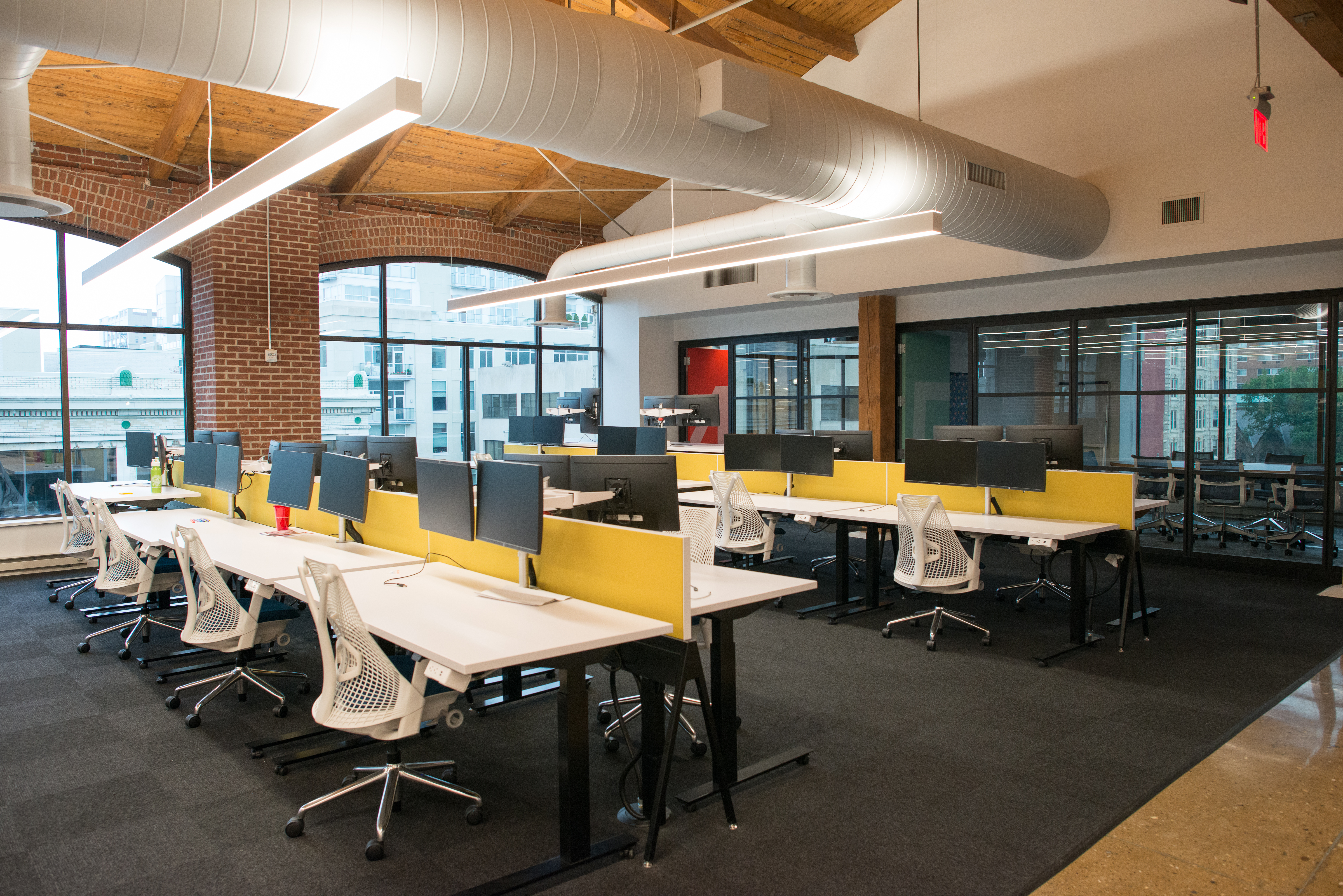Your cart is currently empty!

Creating a workspace that promotes productivity and morale should be the objective of every supervisor, manager, and CEO. But there are many different ways to accomplish this and the data is always conflicting.
One of the most popular ways to achieve this is the layout of the workspace, and there are currently two different setups that are competing for the heavily coveted title of most ergonomic.
Open-Plan Offices
Pros:
- Accountability in the workplace. When coworkers and supervisors can see each other working, it is less difficult to waste time doing nothing.
- Flexible seating arrangements make it easier for people to relocate as needed.
- Easier to communicate with others in the office. This is especially useful when the information is time sensitive.
Cons:
- Feeling that you’re being watched can cause employees to feel anxious and uncomfortable, which can diminish their productivity.
- Loud and visually distracting. This can be particularly frustrating for employees on the autism spectrum or who have ADHD and may require accommodations to counteract the distractions
- Difficult for some workers to thrive if they don’t feel that they have ‘their’ space and no clear sense of boundaries.
Cubicles
Pros:
- Easier to focus, workers have more control over who they interact with and how much sensory stimuli they’re exposed to.
- Reduced physical interaction and more barriers between individuals can reduce the spread of germs in the office.
- They create a feeling of privacy and personal space, which some employees may feel more relaxed in.
Cons:
- It may, however, make it easier for employees to get distracted if there’s no one to keep an eye on them and make sure they’re working
- Physical barriers may discourage communication, inhibit collaboration, and create a feeling of isolation
- Making a cubicle available for every employee can be costly depending on how many employees a company has.
The Final Verdict
Both the open-plan office and the cubicle reflect two basic human needs- the need for shelter and the need for interaction. Too much shelter turns into isolation and too much interaction turns into unproductive behavior. The solution?
Providing workers with options to choose which suits their workstyle best using activity-based working. Activity-based working is built on the concept that when employees have options to choose which environment best suits they’re work style, they are more likely to thrive. This can look like creating open spaces in the office without leaving it entirely open, and using office furniture such as a sit-to-stand desk.
